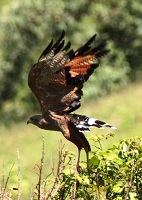- Home
- Cachoeiras de Macacu
Attractions and Activities
Cachoeiras de Macacu has a great vocation for outdoor tourism, due to its exuberant nature with forests, rivers, waterfalls and mountains.
Hiking, cycling and horseback riding are organized in the region, as well as adventure activities such as climbing, abseiling, free flight and canyoning.
With more than 400 species of birds, including endemics, it is already being sought after by birdwatchers.

Ruins of São José da Boa Morte

The walls of the old 18th-century church, in ruins, form an imposing setting on top of a small hill. It has a single nave and a conventionally arranged chancel. The simple façade features a large door, three upper windows and a pediment with a high point. There are still traces of the old side tower attached to the body of the church and the old cemetery at the back. It was provisionally listed in 1989.
Leopoldina Railway Cantagalo branch

The Leopoldina Railroad connected Niteroi to Nova Friburgo via Porto de Caixas in Itaboraí. It was the first mountain railroad in Brazil and the mountain section began in Cachoeiras de Macacu. It operated between 1873 and 1965. It used the Fell system and equipment from the Mont Cenis Railway (which linked France and Italy). In 1883, the original locomotives, which were expensive to maintain, were replaced by Baldwin locomotives.
Unfortunately, only stations, points and some tracks of the railroad remain.
Ruins of the Church of the Holy Trinity (Papucaia)
The Church of the Santíssima Trindade was inaugurated in 1743 and had its origins in the chapel of Dona Francisca de Azevedo’s farm.
The move of the parish seat first to Japuíba and then to the town of Cachoeiras de Macacu led to the abandonment of the old Igreja Matriz da Santíssima Trindade, until it fell into ruins. It is now known as the Old Church. Only the side walls remain.
The ruins are on private property, but can be seen from the road.
Church of SantÁnna (Japuiba)
The church of Santana de Japuíba began as a chapel built by farmer Manoel Ferreira da Silva in 1732. As access to Japuiba was via the Macacu River, the church was built with the front facing the river. The church, which was abandoned at the beginning of the 20th century, has been restored.
Mansions
There are several interesting mansions such as the Casarão Antiga de Japuiba (Japuiba), built by the Portuguese merchant Bertholdo Duarte around 1875 to serve as a warehouse.
Atrativos Naturais

Caledonia Peak (2219 meters). It lies on the border between Cachoeiras de Macacu and Nova Friburgo. Access is via Nova Friburgo (Cascatinha district).
Pedra do Colégio (300 meters). It is the symbol of the city of Cachoeiras de Macacu and a Municipal Natural Monument. Its walls get very hot in the sun, favoring thermal conditions for hang-gliding.
Pedra do Faraó (1719 meters) It lies on the border between Cachoeiras de Macacu, Silva Jardim and Nova Friburgo. Access from Cachoeiras de Macacu is via the ruins of Fazenda Santa Fé.
3 Picos State Park (65,113 ha). Created in 2002, it is the largest park in the state of Rio de Janeiro and forms a forest continuum with the Serra dos Órgãos National Park and the Paraíso State Ecological Station. It is an important refuge for the fauna and flora of the Atlantic Forest, especially mammals and birds. Its headquarters and Visitor Center are located in Cachoeiras de Macacu (Boca de Mato), from where several trails leave, including an interpretive trail that leads to an ancient Jequitibá tree.
RPPN Regua. A pioneering conservation project since the 1990s, next to the Tres Picos National Park. It combines conservation, restoration, research, community engagement and ecotourism. It offers day visits or longer programs with an overnight stay in a lodge. There are also vacancies for volunteers
Waterfalls. Tenebroso, Sete Quedas, Barba, Samambaia, Chapadão and Furna da Onça
Modalities, Classes and Clinics
Contact
- Estrada Antônio José, km 5, Faraó, Cachoeiras de Macacu - RJ
- +55 (21) 98156-0212 (Tim) +55 (21) 99765-8576
- escola@desempenho.esp.br
